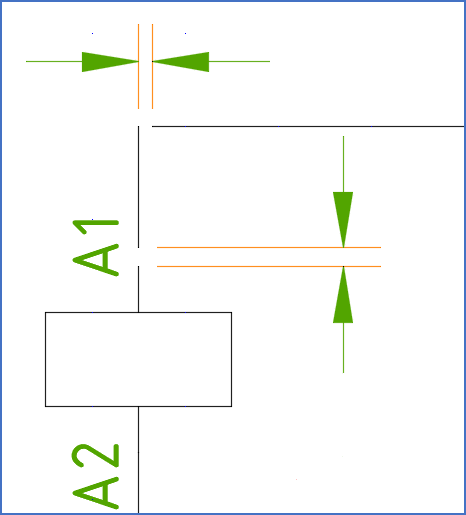|
<< Click to Display Table of Contents >> Connection point tolerance |
  
|
|
<< Click to Display Table of Contents >> Connection point tolerance |
  
|
The OnLine Engine continuously extract all information that is needed to create terminal lists, wire lists and other connection documents. To achieve that, all lines between terminals, connectors, and other symbols are detected and analysed.
If an endpoint of a line is located on a connection point of a symbol, the line is considered to be connected to that connection point. If an endpoint of a line is located on another line, the two lines are considered to be connected with one another, and thereby belong to the same electrical potential.
A certain human tremble, especially common on Mondays, in combination with thin budget frames and thereof resulting low screen resolution, may cause lines not to hit connection points of symbols or other lines perfectly. In fact, all coordinates in AutoCAD are defined with floating point numbers, which means that even a perfect hit may result in a deviation. It will be very small, but it might not be zero.

Figure 454: This figure shows two examples of gaps. If these gaps are smaller than the specified tolerance, the lines will still be considerd as "connected".
The Connection point tolerance parameter specifies the tolerance, within which cadett ELSA interprets an open connection as closed.
•The most common value for this is 0.5 millimetres.
The reason for that choice is that a gap of that size is large enough to be visible to the naked eye if printed, and at the same time not large enough to give any limitations in the usage of the standard symbol libraries.
The value of the tolerance can be chosen arbitrary, but you should not use a value that is too large. Lines not intended to be connected might for example unintentionally still be regarded as such.
For many reasons, among them aesthetic, you should make sure that there are no gaps.
The best way to avoid gaps, is a consistent use of a well chosen snap, most suitably 2.5 mm for IEC symbol libraries.